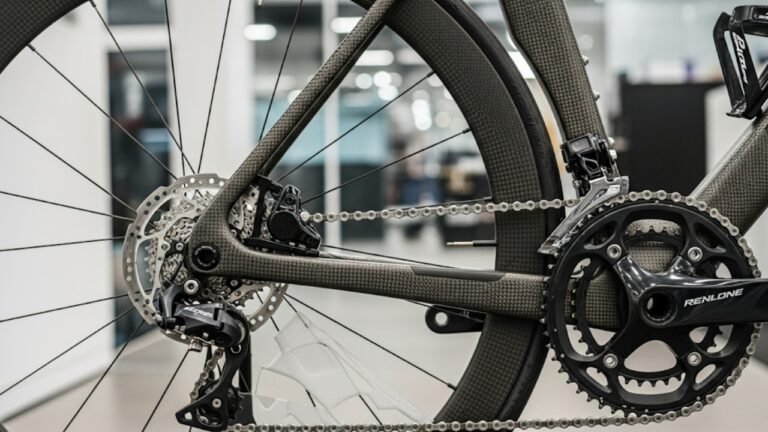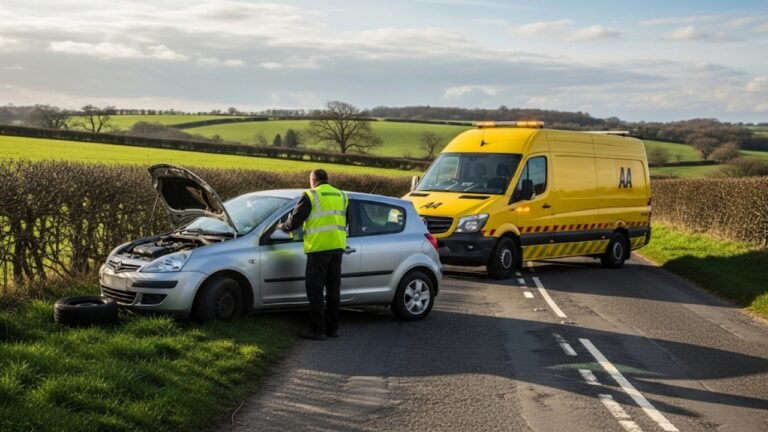Environmentalists Launch a Successful One Family, One Car Campaign
Not long ago, my neighborhood felt like a parking lot. Every home had two or even three cars. The streets were crowded, and the air was heavy, especially during rush hour. But recently, something changed. Families started sharing cars. You could feel the air getting cleaner. You could hear kids playing instead of horns honking. It was thanks to the “one family, one car campaign” led by passionate environmentalists.
This isn’t just a local shift. It’s a growing movement. All over the world, people are talking about how this simple idea—one car per family—can make a massive difference. And the best part? It’s not a sacrifice. It’s a smart, conscious choice.
In this article, we’ll explore how this campaign took off, why it worked, and what it means for our planet and our daily lives. If you’ve ever wondered how to do more for the environment without turning your world upside down, keep reading.
Why the One Family, One Car Campaign Matters

According to the Environmental Protection Agency (EPA), the average car emits about 4.6 metric tons of carbon dioxide per year. If every household cut back by just one vehicle, imagine the impact. Multiply that by millions of families, and you’re looking at a massive reduction in greenhouse gases.
But this campaign isn’t just about numbers. It’s about rethinking priorities. It’s about realizing that a car is not a status symbol—it’s a tool. And like any tool, it’s better when shared wisely.
How the Movement Gained Momentum
The success of the “one family, one car campaign” wasn’t accidental. It was a blend of strategic outreach, emotional appeal, and community storytelling. Environmentalists didn’t just push statistics. They shared real stories. They showed families bonding more because they traveled together. They featured people biking to work with joy. They created a narrative people could see themselves in.
Key strategies included:
Community Workshops: Teaching people how to coordinate car usage, use ride-sharing apps, or safely bike or walk.
Partnerships with Local Governments: Incentives for families owning one car, including tax breaks and free public transport passes.
Social Media Campaigns: Hashtags like #OneCarFamily and heartfelt video stories that went viral.
Local Challenges and Rewards: Communities competed to see who could go the longest with just one car.
These actions weren’t just smart—they were personal and practical. They spoke to both the heart and the mind.
The Surprising Benefits Families Discovered
You’d think cutting down to one car would make life harder, right? But ask the families who joined the campaign, and most will say the opposite. Yes, there were adjustments. But what they got in return was often life-changing.
Here’s what many of them reported:
| Benefit | Impact |
|---|---|
| Lower Monthly Expenses | Saved on gas, insurance, maintenance, and parking |
| More Family Time | Shared car schedules led to more conversations and connection |
| Better Health | More walking and biking improved overall well-being |
| Less Stress | Avoided traffic by using bikes, carpools, or public transport |
| Closer Community Ties | Neighbors helped each other out with carpooling and support systems |
When you live with one car, you naturally plan better. You share more. You walk to the store instead of driving. These small changes add up to a more intentional lifestyle. And that’s something people started to truly appreciate.
Challenges and How Communities Overcame Them
Let’s be real—it wasn’t all smooth sailing. Some families struggled at first. In rural areas, public transportation is limited. Some people had shift jobs or unpredictable schedules. But the strength of the campaign was in its flexibility.
Environmentalists didn’t push for perfection. They offered solutions instead:
Car Sharing Platforms: Apps made it easy for neighbors to share vehicles.
Flexible Work Policies: Companies were encouraged to allow remote work or staggered shifts.
Bike and E-Bike Subsidies: Affordable alternatives for short commutes.
Weekend Rentals Discounts: For families who needed a second car occasionally.
These small innovations made the transition smoother. And as more families joined, a support network formed. People started to see themselves as part of a community with a shared mission—not just individuals making sacrifices.
The Role of Culture and Storytelling in the Campaign
Every movement needs a heart. For this campaign, the heart was the human story. People shared tales of walking their kids to school, biking to the farmer’s market, or discovering a hidden café on a route they would’ve missed in a car. These weren’t just changes—they were moments of joy.
One story that really stuck with me came from a single mom in Chicago. She had to give up her second car after losing her job. At first, it felt like a loss. But as she adapted, she found herself walking more, chatting with neighbors, and even losing weight. Her teen son started biking to school and grew more independent. Now, she says she’d never go back.
These stories built trust. They made the campaign real. And they showed that this wasn’t about giving things up—it was about gaining something richer.
Environmental Impact: The Results Speak Loudly
So, what kind of environmental difference has the “one family, one car campaign” made so far?
Let’s look at the numbers:
In cities like Portland and Amsterdam, car ownership dropped by 22% in participating neighborhoods.
Air pollution levels decreased by up to 30% in high-density areas.
Bike usage increased by 50%.
Public transport usage rose by 18%, easing urban traffic and reducing fuel usage.
These aren’t just statistics—they’re proof that collective action works. When enough people make a small shift, the world begins to change. And the beauty of it? It doesn’t rely on new technology or huge investments. It’s about making smarter choices with what we already have.
Looking Ahead: A Movement, Not a Moment
The success of the “one family, one car campaign” didn’t just solve a short-term issue—it sparked a vision for the future. The environmentalists behind it knew from the start: to make real change, the movement had to outlive the buzz.
Now, cities are building on this momentum. Urban planners are reshaping roads for bike lanes and pedestrian zones. Schools are hosting “no car drop-off” days. Even some car manufacturers are adapting by promoting car-sharing features in new models.
The campaign planted a seed, and now it’s growing into a lifestyle shift. People are realizing they don’t have to fight climate change alone. They can start in their driveway—with one simple, powerful choice.
Global Inspiration: How Other Countries Are Adapting
The idea of “one family, one car” has started to cross borders. Environmental groups in Asia, Europe, and Africa are adapting the model to fit local needs. Let’s take a quick world tour:
Sweden: The government provides tax rebates to families with one car, especially those using electric or hybrid vehicles.
India: In dense urban areas like Mumbai, the campaign encouraged shared auto-rickshaw zones and monthly car-free streets.
Kenya: In Nairobi, NGOs partnered with public schools to start bike-to-school groups for students.
Japan: High-speed rail and city planning support car-light living. Campaigns focused on elderly mobility and eco-friendly transport hubs.
These countries show that culture and creativity matter. While the core idea stays the same, the way it’s applied depends on local habits, geography, and values. And that’s exactly why this campaign works—it respects diversity while encouraging unity.
Public Policy: Governments Play a Key Role
Environmentalists may have launched the campaign, but policy support made it sustainable. In cities where the campaign thrived, local governments stepped in with practical support:
Congestion Pricing: In London and Singapore, drivers pay a fee to enter busy areas. Families with one car often avoid these costs, encouraging the shift.
Car-Free Days: Paris holds monthly “journées sans voiture,” where even tourists are encouraged to explore the city on foot or bike.
Transit Subsidies: In many places, one-car families received free or discounted public transport passes.
Parking Restrictions: Limited parking made multiple car ownership less appealing, nudging people toward downsizing.
Good policy acts like a gentle push—it doesn’t punish but guides people toward better choices. With more governments adopting these approaches, the campaign continues to gain traction.
Personal Reflection: How One Car Changed My Life
Let me share a little personal truth.
When I first heard of the “one family, one car campaign”, I scoffed. My wife and I both worked full-time. Our kids had soccer, piano, and playdates. We lived in the suburbs. Two cars felt like a necessity.
But then we tried it—for just one month.
We synced calendars. We carpooled. I biked on sunny days. We argued a bit at first (of course!), but something beautiful happened. We slowed down. We laughed more in the car. We learned to prioritize.
Now? We’ve sold the second car. I use that money to take my family on nature trips. Our kids are more active. And I feel good—deep down—knowing we’re doing our small part for a cleaner world.
The Unexpected Ripple Effects
What’s beautiful about this campaign is how it affects more than the environment. It changes habits, values, and relationships.
Here’s what many participants shared:
Deeper Community Bonds: When you carpool or walk, you talk more. You meet people. You reconnect.
Slower, Happier Lives: Fewer errands mean less rushing. Families reported less stress and more peace.
Empowered Kids: Older children learned to bike, take buses, and be more independent.
This campaign is like a drop in the water. One change spreads out and touches everything.
Frequently Asked Questions (FAQs)
1. Is the “one family, one car” campaign realistic for everyone?
It depends on location and lifestyle. While rural or multi-shift families may struggle more, the campaign promotes progress, not perfection. Even reducing car use a few days a week helps.
2. What if I need a second car for emergencies?
Some families use short-term rentals or rideshare apps as backup. Others have arrangements with neighbors. Planning ahead helps reduce the need.
3. Does this campaign mean I can’t drive at all?
Not at all! The campaign encourages intentional driving. Use your car wisely, share it within your household, and avoid unnecessary trips.
4. What incentives are available for one-car families?
In many areas, you might get reduced insurance, tax benefits, or public transport discounts. Check with local programs.
5. Is public transportation good enough to support this lifestyle?
It varies. But the more people join the campaign, the more demand there is for better buses, trains, and bike paths. Your participation helps improve the system.
6. Will this work with kids and busy schedules?
Yes—with planning. Families often coordinate pickups, use carpools, or let older kids use bikes or transit. It’s a shift, not a sacrifice.
7. Can this really impact climate change?
Absolutely. Transportation is a major emitter. Fewer cars = fewer emissions. If just 10% of families reduce one car, the change is substantial.
8. How do I convince my family to try this?
Start with a trial. Frame it as a fun challenge, not a rule. Share stories from others. Let results speak louder than pressure.
Conclusion: A Greener Future, One Family at a Time
The “one family, one car campaign” isn’t a miracle cure. It’s not flashy or trendy. But it works—because it’s simple, human, and grounded in common sense.
By choosing to own one car, families are sending a message: We care. We’re willing to change. We want a better world for our kids.
And the beauty? Anyone can join. It doesn’t matter if you live in a city or suburb, have kids or not. Start small. Walk more. Plan smarter. Share the ride.
You don’t have to be perfect. Just be part of the shift.
In the end, saving the planet isn’t about big speeches or billion-dollar tech. It’s about small acts—done by millions. And maybe, just maybe, it starts in your garage.





